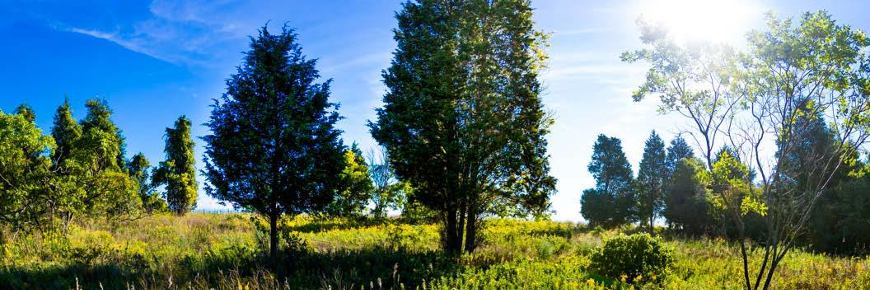
Panoramic view of Sparrow Field, a restored open savannah.
Saving the savannah
Restoring a rare habitat in Point Pelee National Park
What’s the issue?

Sandspit savannahs are rare ecosystems that depend on disturbance – fire, wind, ice and wave action – to maintain their open character. Changes in the frequency and severity of these disruptive forces, through actions such as fire suppression and shoreline alterations, has jeopardized the savannahs of Point Pelee National Park. The problem has been further compounded by the invasion of non-native plants, like spotted knapweed or white sweet clover. These are altering the favoured habitats of endangered species like eastern prickly pear cactus, five-lined skink and yellow-breasted chat.
What’s our approach?
- Restore 24 hectares of savannah ecosystems, including 4 hectares of yellow-breasted chat habitat.
- Use a variety of methods like mechanical clearing, prescribed fire and herbicide application to mimic disturbance and control invasive species.
- Plant native species to hasten restoration.
- Provide meaningful opportunities to local youth by engaging them in restoration planting and site monitoring.
- Engage visitors to learn about savannah ecosystems by offering hands-on experiences and sharing restoration stories.
What’s been accomplished?
- Cleared overgrown and invasive species in 20 hectares of savannah and another 3 hectares of overgrown habitat in Anders Field for yellow-breasted chat nesting habitat.
- Collaborated with local schools to collect seeds, propagate seedlings and plant native species (cylindrical blazing star, butterfly milkweed) to accelerate restoration.
- Developed a new interpretive program for YMCA youth camp about the importance of savannah ecosystems; opened a new section of the multi-use Centennial Trail, providing views of newly restored savannah habitats.
- Date modified :